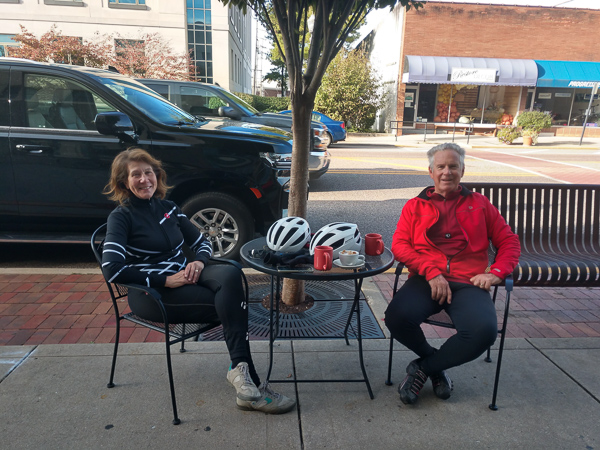Ute Mountain Tribal Park……. Cortez, CO
During our spring adventure, we made a big loop through Colorado, starting in the Denver area, then headed west to Grand Junction for the red rock scenery and wine country. Then we hopped over to Moab, UT, for the canyons and arches. Heading further south, we set up base camp outside of Cortez, CO. Cortez was a perfect base from which to visit Mesa Verde and Hovenweep National Monument. While there, we learned about a tour of the Ute Mountain Tribal Park that would allow us to explore several beautiful archeological sites escorted by a guide.
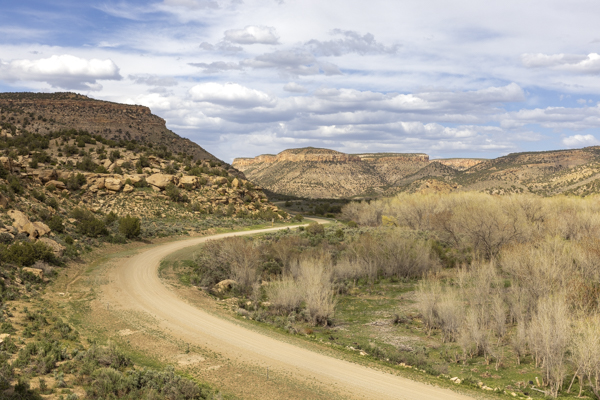
The Princess and I were a little wary when we arrived early at the converted gas station for the tour meet and greet. The “office” did not appear to be a going concern. Soon, however, other people arrived for the tour, and we all waited for the facility to open, and then we waited for our guide to arrive. It is best not to be impatient. We followed Wolf, our guide for the day, who was leading a six-vehicle caravan across the Ute Tribal Park in Colorado for the better part of eight hours, with stops at historical and archeological sites. By the end of the day, the truck had a heavy layer of yellow dust that worked its way into every crack and crevice. We were able to see Ancestral Puebloan sites that most people visiting the four corners area miss. The tour was well worth the wait.
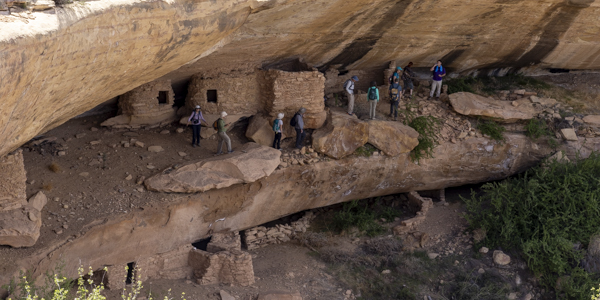
The earliest Ancestral settlements consisted of pit houses constructed around 500 AD. Pit houses were semi-subterranean structures dug into the ground and covered with wooden beams, brush, and earth. Construction involved digging a circular or oval-shaped pit into the ground, typically several feet deep. The hole was then lined with stone, adobe, or other materials to create walls. Wooden beams were often placed across the top of the pit to form a framework for the roof. The roof was then covered with a layer of thatch made from local vegetation, followed by a layer of packed earth to provide insulation and stability.
The entrance to the pit house was typically through a ladder or steps leading down into the pit. Inside, the pit houses were generally divided into different areas for various activities such as cooking, sleeping, and storage. They often had a central hearth for warmth and cooking, with a central roof hole allowing smoke to escape. On top of a mesa, Archeologists identified the location of a community housing several hundred individuals living in this type of housing. This site was inadvertently discovered when a road cut went through the edge of the buried village fifty years ago. This road cut dislodged a large quantity of pottery shards. All of the dwellings were filled in over the centuries by blowing dust, but every time it rains, more pottery rises to the surface of the ground. As we walked through the area, the shards of pottery were everywhere. Wolf cautioned us not to take or even touch any of the pottery. He believes the shattered pots belong to the potter who created the vessels ten centuries ago. The spirits of these people still live there.

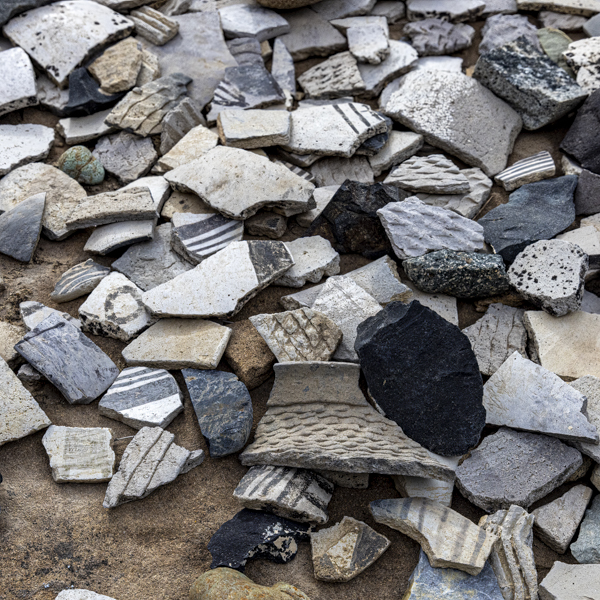
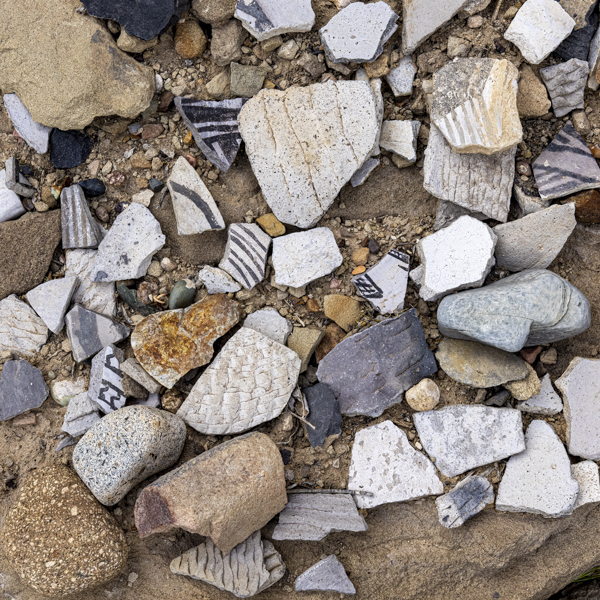
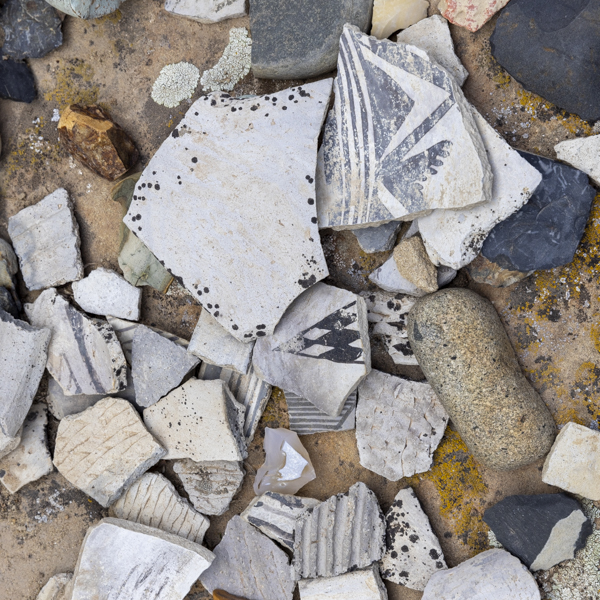
Some of the shards had scollops, others a rope design. Hard to imagine these pieces of pottery lying on the ground were over a thousand years old.
The tour included several cliff dwellings that required short hikes and too many ladders that would not pass an OSHA inspection but were “kind of” safe. The Princess was a tad concerned but forged ahead anyway. We were both surprised that the group was encouraged to climb through the doorways and walk through the dwellings.
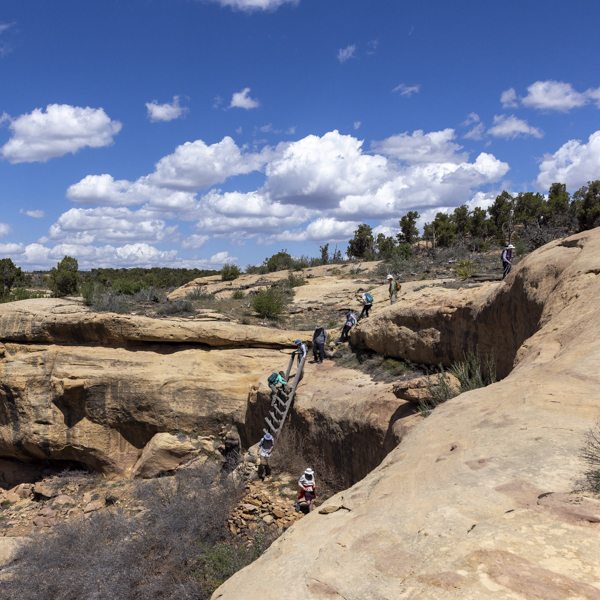
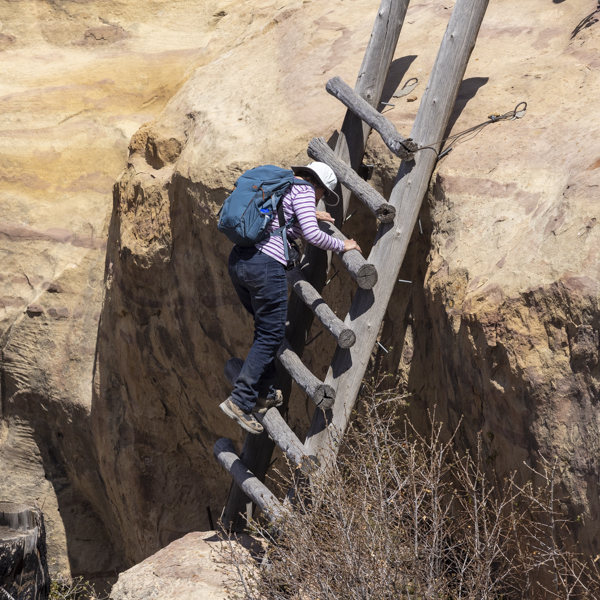
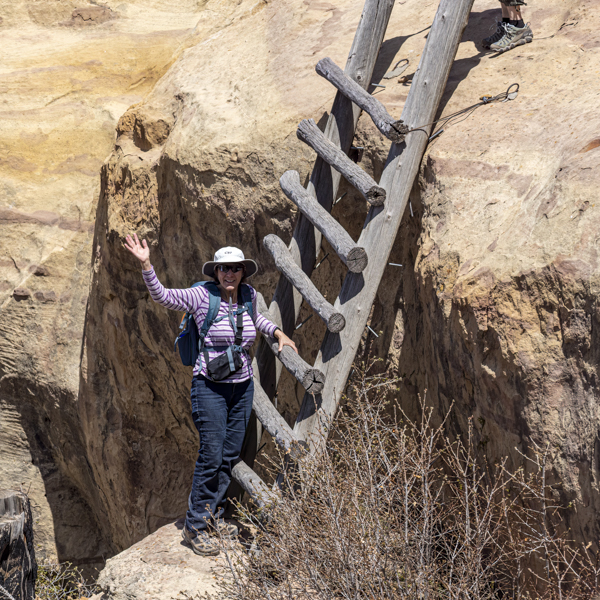
The Princess was very brave.
The Ute Nation does not believe in restoring any of the sites or taking anything from the sites. As recently as the early 1900s, some ruins still had pots on shelves. These were extensively looted in the 1920s and 30’s. Since then, all visitors are required to have a guide. Also, since there has been no restoration, the buildings are exactly how they were originally constructed. Some still have the wooden roof structure in place.
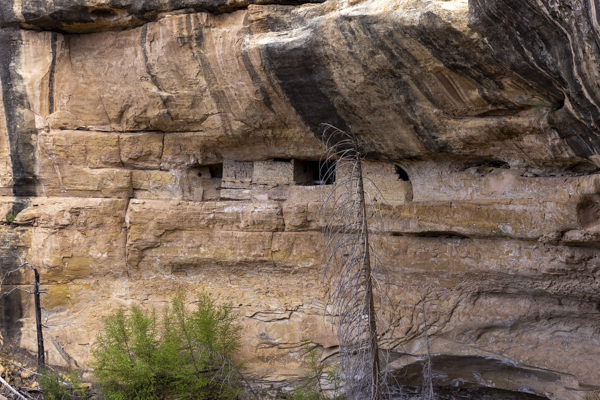
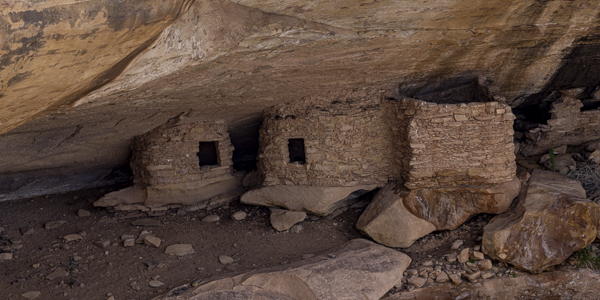
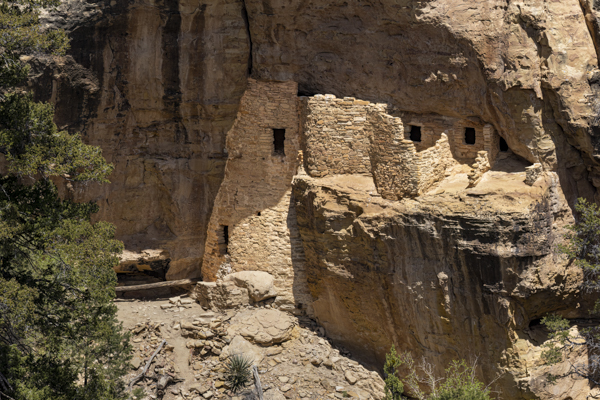
A second location of pit houses in a river valley had petroglyphs on the cliff walls. I particularly like the footprints of a bear approaching a deer.
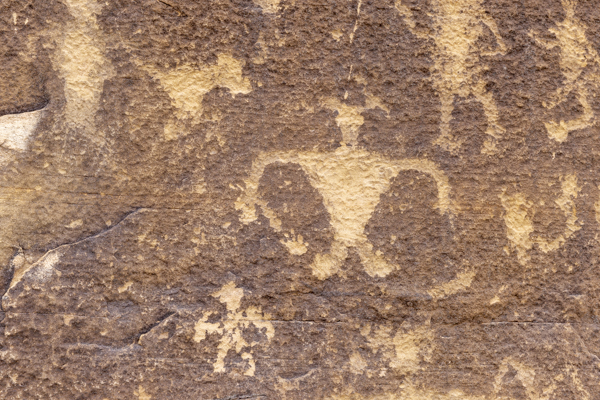
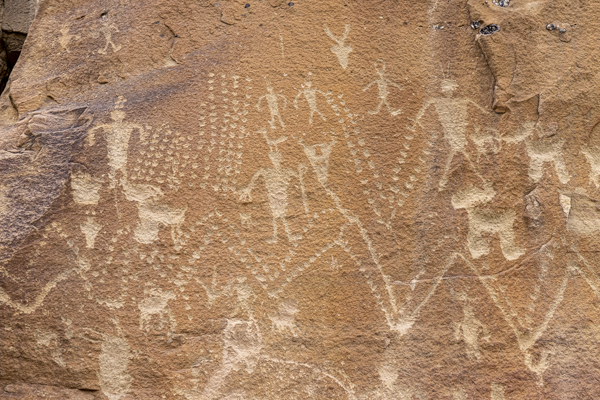
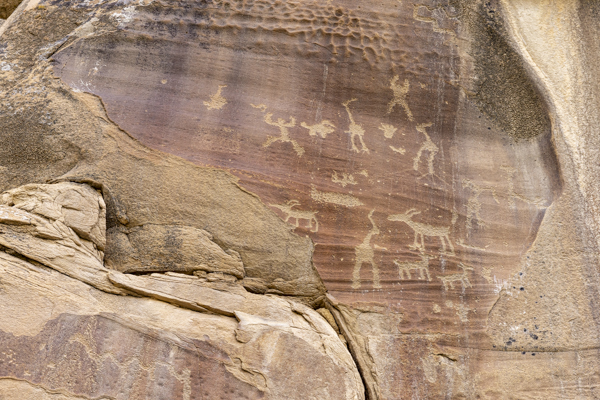
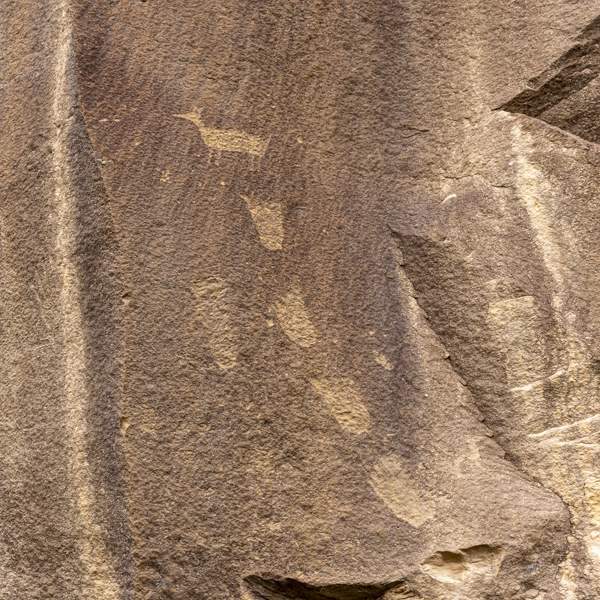
What made this tour special for us is that Wolf, our guide, discussed his culture and beliefs. When he talked about the spirits of everyone who had ever lived in a dwelling still living there, it took on a religious feeling for me, much like being in a cathedral. The time in the Ute Mountain Tribal Park changed how I felt when touring Mesa Verde and Hovenweep.
Dennis
Note 1: We parked the rig for a week at The Views RV Park, located closer to Delores than Cortez. It is a well-run commercial campground with nice facilities and reasonably good internet. A little expensive, but we found most commercial campgrounds to be very expensive this year.
Note 2: There is a great coffee shop and restaurant in Mancos, a small “artsy” town between Cortez and Durango. The Absolute Bakery Cafe offered some very good loaves of bread and pastries.




